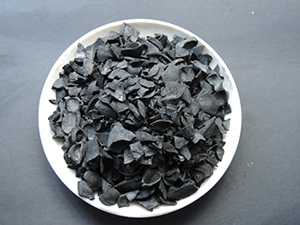ïŋ―ïŋ―ïŋ―ïŋ―ïŋ―ïŋ―ïŋ―ïŋ―Ėŋ
 |
ïŋ―ËâĢš2044 ïŋ―l(fïŋ―ïŋ―)ïŋ―ïŋ―ïŋ―r(shïŋ―ïŋ―)ïŋ―gïŋ―ïŋ―2015-05-25 11:17 ïŋ―P(guïŋ―ïŋ―n)ïŋ―Iïŋ―~ïŋ―ïŋ―ïŋ―ïŋ―ïŋ―ïŋ―ïŋ―ïŋ―ïŋ―ïŋ―Ėŋ ïŋ―a(chïŋ―ïŋ―n)Æ·ïŋ―ïŋ―Ė(hïŋ―ïŋ―o)ïŋ―ïŋ― ïŋ―ïŋ―(yïŋ―ïŋ―ng)ïŋ―ïŋ―ïŋ―I(lïŋ―ïŋ―ng)ïŋ―ïŋ―ËŪĖïŋ―ïŋ― ïŋ―a(chïŋ―ïŋ―n)Æ·ïŋ―r(jiïŋ―ïŋ―)ïŋ―ïŋ― ïŋ―ïŋ―ïŋ―Ë―ïŋ―ïŋ―ïŋ―ïŋ―a(chïŋ―ïŋ―n)Æ·Ôïŋ―ïŋ―,ïŋ―ïŋ―Õ(qïŋ―ïŋ―ng) |
ïŋ―ïŋ―ïŋ―wïŋ―îŧŊŌēïŋ―Įđïŋ―ïŋ―ïŋ―ïŋ―ïŋ―ïŋ―ïŋ―Ėŋïŋ―ïŋ―ïŋ―Éģïŋ―Æ·ïŋ―ïŋ―ïŋ―ïŋ―ïŋ―ŌŠïŋ―ïŋ―(jïŋ―ïŋ―ng)ïŋ―^(guïŋ―ïŋ―)ïŋ―ïŋ―Ōŧïŋ―ïŋ―(gïŋ―ïŋ―)ïŋ―îŧŊïŋ―^(guïŋ―ïŋ―)ïŋ―ïŋ―,ïŋ―ïŋ―ïŋ―ïŋ―ïŋ―wïŋ―îŧŊïŋ―ïŋ―ïŋ―^(guïŋ―ïŋ―)ïŋ―ïŋ―ïŋ―ä(shïŋ―ïŋ―)ïŋ―ïŋ―ïŋ―ÃŧîŧŊïŋ―ïŋ―ïŋ―wïŋ―cCïŋ―l(fïŋ―ïŋ―)ïŋ―ïŋ―ïŋ―ïŋ―ïŋ―ïŋ―ßÔïŋ―ïŋ―ïŋ―ïŋ―(yïŋ―ïŋ―ng)ïŋ―ïŋ―ïŋ―ïŋ―ïŋ―gĖŋïŋ―ïŋ―ïŋ―ïŋ―Äąïŋ―ïŋ―ïŋ―,ïŋ―ïŋ―ÍŽïŋ―r(shïŋ―ïŋ―)ïŋ―ïŋ―ČĨïŋ―ïŋ―ïŋ―ïŋ―ïŋ―(lïŋ―ïŋ―i)ïŋ―ïŋ―ïŋ―|(zhïŋ―ïŋ―)ïŋ―ïŋ―ÄĐĖŋïŋ―ïŋ―ïŋ―ïŋ―,ïŋ―ïŋ―ĘđĖŋïŋ―ïŋ―ïŋ―Ïĩïŋ―ÎĒïŋ―ïŋ―(xïŋ―ïŋ―)ïŋ―ïŋ―Ïķïŋ―Y(jiïŋ―ïŋ―)ïŋ―ïŋ―(gïŋ―ïŋ―u)ïŋ―l(fïŋ―ïŋ―)ïŋ―_(dïŋ―ïŋ―)ïŋ―ïŋ―ïŋ―^(guïŋ―ïŋ―)ïŋ―ĖĄïŋ―ÍĻïŋ―^(guïŋ―ïŋ―)ïŋ―âŧŊïŋ―ïŋ―ïŋ―ïŋ―(yïŋ―ïŋ―ng),ïŋ―ïŋ―ïŋ―ïŋ―ĘđĖŋïŋ―ïŋ―ïŋ―ïŋ―Ôïŋ―ïŋ―(lïŋ―ïŋ―i)ïŋ―]ïŋ―ïŋ―ïŋ―Äŋïŋ―ïŋ―_(kïŋ―ïŋ―i)ïŋ―ïŋ―Ôïŋ―ÐĩÄŋïŋ―Ïķïŋ―U(kuïŋ―ïŋ―)ïŋ―ïŋ―ŨąÚïŋ―ʧ,ïŋ―ïŋ―ÄģÐĐïŋ―Y(jiïŋ―ïŋ―)ïŋ―ïŋ―(gïŋ―ïŋ―u)ïŋ―ïŋ―(jïŋ―ïŋ―ng)ïŋ―xïŋ―ïŋ―ïŋ―ÔŧîŧŊïŋ―ïŋ―ïŋ―a(chïŋ―ïŋ―n)ïŋ―ïŋ―ïŋ―ÂŋŨĩïŋ―ïŋ―^(guïŋ―ïŋ―)ïŋ―ĖĄ,ïŋ―ïŋ―ïŋ―Ïķïŋ―ïŋ―ïŋ―Îģïŋ―ïŋ―cCïŋ―ïŋ―ïŋ―ïŋ―ïŋ―ïŋ―ïŋ―Ėķïŋ―ïŋ―ïŋ―ïŋ―ïŋ―ïŋ―ïŋ―ïŋ―P(guïŋ―ïŋ―n),ïŋ―ïŋ―ïŋ―ïŋ―Ōŧïŋ―ïŋ―ïŋ―ÄŧîŧŊïŋ―ïŋ―ʧïŋ―Ę·ïŋ―ïŋ―ïŋ―ïŋ―ïŋ―(nïŋ―ïŋ―i)ïŋ―ïŋ―ïŋ―îŧŊïŋ―ïŋ―ïŋ―wïŋ―cĖŋïŋ―ïŋ―ïŋ―Ïĩïŋ―ïŋ―ïŋ―ïŋ―ïŋ―ïŋ―ïŋ―ïŋ―ïŋ―(yïŋ―ïŋ―ng)ïŋ―Ėķïŋ―Ô―ïŋ―ïŋ―,ïŋ―ïŋ―ïŋ―ïŋ―ïŋ―a(chïŋ―ïŋ―n)ïŋ―ïŋ―ïŋ―Äŧïŋ―ïŋ―ïŋ―Ėŋïŋ―Čąïŋ―ïŋ―ïŋ―eïŋ―ïŋ―Ô―ïŋ―ïŋ―,ïŋ―ïŋ―ïŋ―ïŋ―ÏķŌēïŋ―ïŋ―Ô―ïŋ―l(fïŋ―ïŋ―)ïŋ―_(dïŋ―ïŋ―)ïŋ―ïŋ―ïŋ―ïŋ―ïŋ―ïŋ―ïŋ―ïŋ―ïŋ―Üūïŋ―Ô―ïŋ―ïŋ―,ïŋ―ïŋ―
Gas activation process is activated gas and C using redox reaction, erosion surface carbide, while removing the tar-like substance and not charcoals, carbonized material so fine pore structure developed in the process. Through gasification reaction, the carbonized material originally occluded pore opening, expanding existing porosity and pore wall LOI, certain structures generated by selective activation process for new holes. Pore formation and the degree of oxidation is closely related to C, in a certain range of the activation rate of LOI, the degree of activation of the gasification gas and the reaction deeper the carbonized material to produce activated carbon, the greater the specific surface area, pore becomes more developed, the activated carbon adsorption performance better.
ïŋ―ïŋ―ïŋ―Äïŋ―(lïŋ―ïŋ―i)Ôīhttp://www.jhgscl.com/ns.aspx?ID=1819

